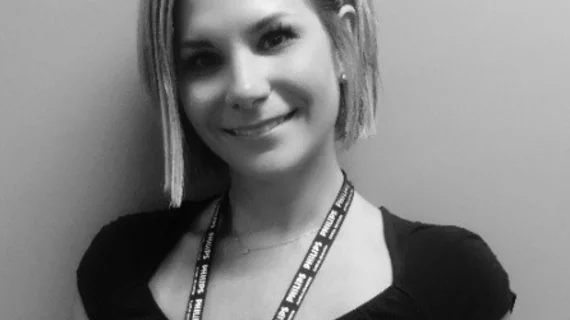A lack of communication skills—not AI—is the greatest threat to millennial radiologists
Millennials growing up in an evolving world of digital connection might be drawn to the high-tech nature of radiology, but those same prospective physicians should be wary of their bedside manner, according to one Arizona clinician.
Amber Pokorney, BSRT, MHA, isn’t a millennial; she isn’t a Gen X-er, either. But as the chief research MRI technologist at Phoenix Children’s Hospital, Pokorney has been able to observe the different generations at work.
“I wasn’t born with all the technology, but I adapted to it, so I’ve kind of learned both sides,” Pokorney told Radiology Business. “And oh, gosh, they’re completely different.”
Despite global shortages and the perceived threat of artificial intelligence, Pokorney said the radiology space is actually an attractive one to med school graduates. It’s complex and challenging—“everything is dependent on a piece of technology,” she said—but that’s where millennials feel comfortable, and they can help transfer that knowledge to older radiologists.
But the two generations differ in more ways than one, Pokorney said, namely in their diverse learning styles and the way they’re able to communicate with patients and other care providers. Incoming radiologists have never known a world without smartphones or instantaneous connections and answers, and that could hurt the younger demographic, especially since AI is paving the way for less time spent on repetitive, finicky tasks and more time spent on individualized patient care.
“AI can do all the really hard calculating of things, but it has no way to connect,” Pokorney said. “And I think the biggest thing is you need to connect with these patients to make them feel more comfortable. To get them through exams, to comfort them. And the new millennials don’t have the ability to connect.”
Millennials are the most threatened group of physicians when it comes to the rise of AI, Pokorney said, because they’re just not great communicators. AI could be beneficial to the group in many ways, including in reducing burnout rates by clearing more time for personal projects, but quality won’t improve without some effort.
“They aren’t very personable,” she said. “Everything sensory is kind of numbed.”
She said the phenomenon is particularly challenging since it’s so difficult to teach adults new communication strategies, especially when they’re connected to their personalities. Millennials are very intelligent, she said, but their levels of emotional intelligence are problematic.
Change could be rooted in medical school itself, Pokorney suggested, by requiring more sociology classes or shadowing seasoned professionals. But since millennials are so tech-driven, they work less with people and more with processes.
“If you create a process for them, it’s like training them,” Pokorney said. “You create a process of connection and show them how it works, get them into the routine of doing it.”
Entering the workforce and being held to certain performance standards also raises the bar and creates an urgency to try and establish more meaningful patient connections, she said.
“I think the coming years are going to be difficult, but they’re going to be manageable,” she said. “It’s hard to learn something new, but it’s a challenge and I’m hoping that millennials take it as a challenge that they want to meet.”

